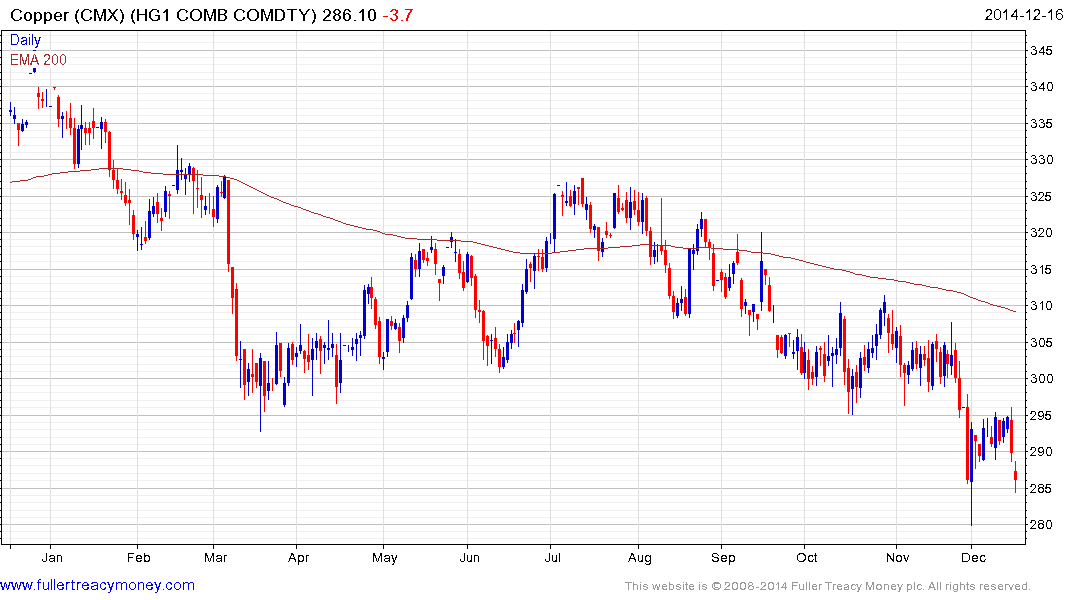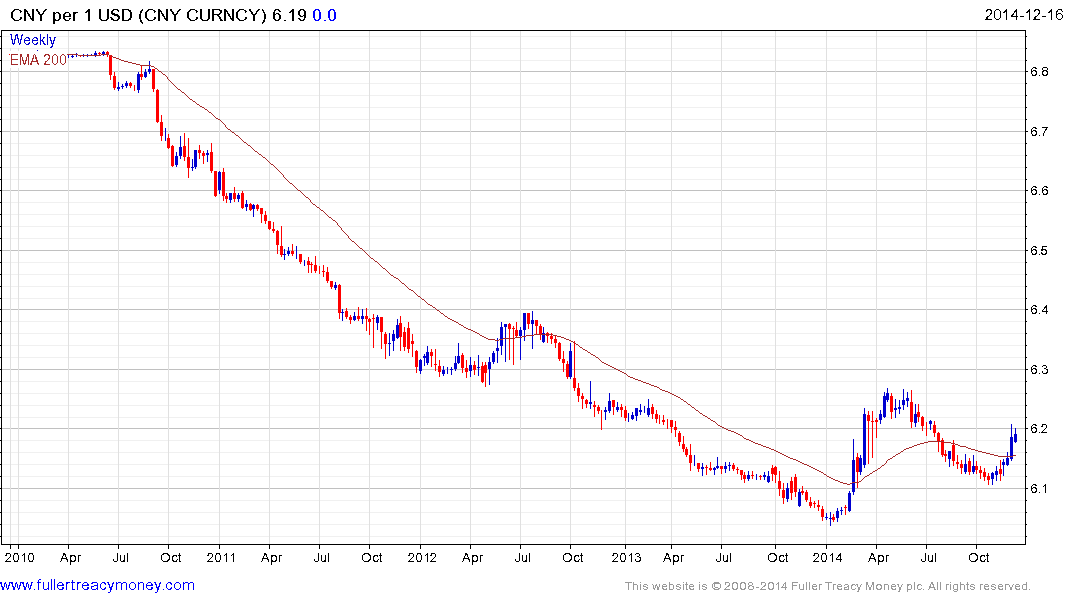Global Metals Playbook: 2015 Outlook
Thanks to a subscriber for this informative report from Morgan Stanley which may be of interest to subscribers. Here is a section:
Metal’s flagship has got upside: Copper’s price has come under pressure late in the year, reflecting the energy sector sell-off and a perceived short-term metal surplus. Weaker, but the price remains well above its long-term average, and above the industry’s 90th percentile. Robust support of its value comes mainly from two drivers: China’s overwhelming dependence on imports (70% of supply); and the fickle nature of copper’s complex supply chain (mine supply; concentrates; scrap). Unlike other commodities, copper’s mine supply growth never quite matched demand growth during the Super Cycle, a condition that is unlikely to change over the medium term – underpinning our bullish price outlook.
Why so bearish? Consensus view: copper’s trade will now report persistent surpluses. Yes, current signals point to adequate supply: inventories are rising; key merchant premia are soft; backwardation may just reflect concentrated LME positions. Elsewhere, concentrate flows are adequate (TC/RCs are high); scrap flows are expanding. We acknowledge these bear signals. We’re just not convinced by the mine supply growth story. Low-risk re-rating of Escondida output over the past two years was actually unusual. To expect short-term green/brownfield deployments to proceed without disruptions at a lower price level (assuming unchanged demand growth) ignores the history of this industry.
Projects to watch: Key mine supply growth drivers to watch include Las Bambas, Toromocho, Sentinel, Cerro Verde; track Codelco’s ability to fund growth to >2Mtpa; Indonesia’s exports remain at risk, politically; in 2016, Escondida may de-rate again on lower grades; Rio Tinto has pared Kennecott’s supply outlook. We expect ongoing supply disappointments, simply because it is a feature of the industry.
Here is a link to the full report.
There are a lot of moving parts to the commodity sector but the biggest change by far to the economics of production has been the falling oil price. We do not yet know at what level prices will eventually stabilise but the fact remains energy costs have fallen almost 50% in six months. Considering how important energy costs are for miners, this move will improve the average cost of production and prolong the ability of marginal producers to increase supply.

Copper continues to range below the overhead three-year range and a sustained move above $3 will be required to question the medium-term downward bias.
A potential risk mentioned in the above report and something we have also talked about is the potential for the Chinese to devalue the Renminbi. Just about every other country in Asia is seeking a lower currency and China’s competitiveness is being eroded by maintaining a quasi-peg to the Dollar. The weakness of the Euro, which is one of China’s largest trading partners, is an additional consideration for the Chinese administration.

The US Dollar has stopped falling against the Renminbi. It posted its first higher reaction low in years from early November and a sustained move below 6.1 would be required to question medium-term scope for continued higher to lateral ranging.
Back to top


